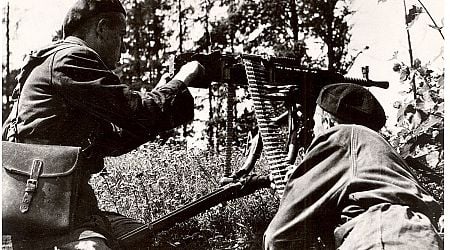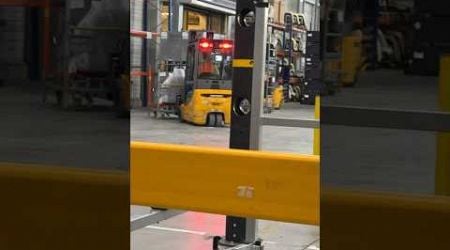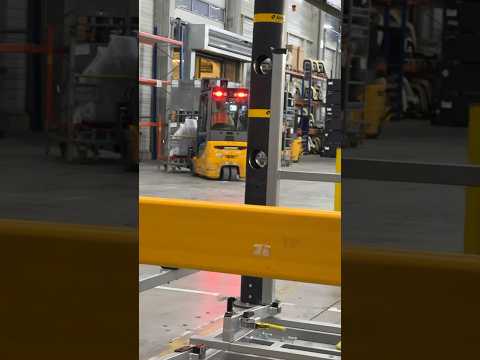French volunteers: Fighting in the Slovak National Uprising by choice
Many French partisans called Slovakia their second home, says Didier Rogasik of the French Embassy in Bratislava.

The French were among the most numerous nationalities involved in the Slovak National Uprising (SNP), an armed two-month anti-Nazi operation, even though their homeland was hundreds of kilometres away. Despite a lack of equipment and only brief training, the French fought several difficult battles, in which, despite heavy losses, they managed to slow the advance of German forces. Didier Rogasik, the press attaché of the French Embassy in Bratislava, who has been studying the role of the French in the SNP for several years, explains how they made their way to Slovakia, how they integrated into the rebel army, and what fate awaited them later.
The reported number of French who participated in the Slovak National Uprising has increased over time due to ongoing research. How many were there according to the latest findings?
After so many years, it is not easy to obtain new information. One has to search for and study materials in archives, since there are not many witnesses from that time left. Sometimes, we find something that suddenly makes sense of what was written in the past or contradicts old information. Let me give you a specific example. It was often stated that 460 Frenchmen fought in Slovakia from the start of the SNP until the country’s liberation, and that 107 of them fell. I always had doubts about this number, which I considered exaggerated, partly because I never found a source that confirmed it. During a recent visit to the Museum of the SNP archive in Banská Bystrica, a document revealed an interesting fact: [Georges Barazer] de Lannurien (commander of the French partisan unit in Slovakia during the SNP, ed.) gave a brief interview to the rebel newspaper Pravda, in which he stated that he “lost a total of 107 men”. He was referring not only to those who died in battle, but also to those who were missing or taken prisoner. I am trying to search through books and archives for various lists and, based on that, compile a roster of those who fought and fell in Slovakia. This work is not yet complete. So far, 61 fallen soldiers have been identified by name. I am also aware of other French citizens: Pierre Lorren (22 years old), buried in Brezina near Trenčín, and Frédéric Hubert, a doctor and member of Captain Nálepka’s partisan brigade. In addition to these two, the French Ministry of Defense records three more Frenchmen who allegedly died in Slovakia in 1944 and 1945: Henri Albert Bille, Gervais Camille Alphonse Campion, and François Jean Paradeis. I will continue to seek more information about them.
How did the French fighters manage to reach Slovakia, considering that these two countries are quite far apart?
There were two main groups. The first consisted of professional soldiers and those who were in military service at the time and had fought in the French army during the war. When France lost the war to Germany in June 1940, 1.7 million soldiers were taken prisoner. They ended up in various camps, from which some managed to escape. They learned that Hungary was not at war with France, so they decided to go there and then, via Romania and Yugoslavia, try to reach North Africa to continue the fight. In total, there were 1,200 French soldiers in Hungary. Some left, but then [Yugoslav communist leader Josip Broz] Tito closed the borders, and they could not escape from Hungary. About 800 French soldiers remained there. I recently discovered some very interesting information: in the unit under the command of de Lannurien, there were a few young Frenchmen who, after France’s capitulation in June 1940, voluntarily went to work in Germany. Later, they escaped and made it to Hungary. The youngest was 17 years old. Some of them fell in the battles in Slovakia.
Didier Rogasik
A former professional soldier, Didier Rogasik served for 15 years in the French Army (ground forces). During his career, he worked for three years (1998–2001) as the assistant to the defence attaché at the French Embassy’s military office in Slovakia. He also worked with the French editorial team at Radio Slovakia International. Since January 2007, he has been working again at the French Embassy in Bratislava as a press attaché.
The second group consisted of young men doing forced labour in munitions factories. Those who later fought in Slovakia were initially near Vienna, and when the Allies bombed these factories, the Germans decided to move production to Slovakia and transferred more than 490 Frenchmen to Dubnica nad Váhom. I have an exact list of them, although one page is missing. Of course, not all of them later joined the SNP. The organisers of the French unit, experienced officers (lieutenants) Georges Barazer de Lannurien and Michel Bourel de la Ronciere, together escaped from a POW camp in July 1942. They intended to reach Turkey and from there join the French army. While passing through Slovakia, they were detained near Sereď by Slovak gendarmes. They were imprisoned for a week for attempting to cross the border illegally and then had to stay in Trnava. There, they met two other French officers, René-Camille Marouzé and Gérard Collier de la Morliere. They learned that a resistance movement was being prepared in the area. Eventually, they managed to reach Hungary, where they were tasked with finding out how many Frenchmen were in the camp near Lake Balaton. About 400 Frenchmen volunteered to fight in the planned uprising, and in August 1944, they crossed the border in groups and arrived in Slovakia. The crossings were organised by Lieutenant de la Ronciere. The soldiers stopped for one night at the bakery of Stoklasa in Sereď, then continued by train to Martin. They were accompanied by two women, members of resistance movements: Ľudmila Zajícová from Trnava and Františka Hrubišková from Bratislava. De la Ronciere was wounded during the last crossing, so he did not fight in Slovakia afterward. Less than 150 Frenchmen made it to Slovakia.
From Dubnica, a group of workers escaped at the beginning of September 1944, but there are some uncertainties. The Dubnica nad Váhom chronicle states that two groups of 60 workers each left: the first group, consisting of Czechs and Frenchmen, on September 3, and the second group on the following day, September 4. However, only 58 men registered with de Lannurien, so it seems that one group went elsewhere, probably to the Ján Žižka brigade. Later, at the beginning of February 1945, another group of 186 French workers escaped. On August 12, 1944, the de Lannurien company was formed, attached to the M. R. Štefánik brigade. Its strength was 99 men on August 28 and increased to 145 men by September 2. The maximum number, 198 Frenchmen, was reached at the end of October 1944. There were also a few more Frenchmen who arrived in other ways. For example, I know of two who were in the Nitra brigade and died in Topoľčianky in January 1945.
Did De Lannurien intend to create an independent French unit from the beginning?
Yes, that was his plan. I’ve read various testimonies about why the French wanted to go and fight. It’s often said that they could have stayed at Lake Balaton because they had a good life there. They could even work during the day. While this is true, it was only until March 1944, when German troops arrived in Hungary. After that, they began searching for French soldiers as well. Perhaps that’s why they decided to go to Slovakia. Another reason is that some never accepted the French capitulation and wanted to continue fighting, even at the risk of dying in an unknown country. I always emphasise, and it’s important to remember, that they all went to fight in Slovakia voluntarily. No one ever forced them to do so. All the other French who chose to stay in Hungary had to go into hiding.
 Didier Rogasik at the SNP celebrations in Strečno in August 2016. (Source: Archive of D. R.)
Didier Rogasik at the SNP celebrations in Strečno in August 2016. (Source: Archive of D. R.)How was the French battalion named after Marshal Ferdinand Foch involved in the functioning of the insurgent army? Who commanded it, and how did it cooperate with Slovak and Soviet units?
With difficulty, and I’ll explain why. The Foch Battalion was part of the 1st M. R. Štefánik Brigade, commanded by Soviet Colonel Piotr Veličko. There was also a Slovak unit and one Soviet battalion. I recently watched a 2009 documentary about the Slovak National Uprising by Dušan Hudec, which I collaborated on. Two Frenchmen, who were still alive at the time, recalled that while the Soviet soldiers fought well, discipline was not their strong suit. A major problem was the lack of communication between the units during combat. The best example of this was the battle at Priekopa. The French, Slovaks, and Soviets all went into battle, but they were not coordinated. The French were left almost on their own. This lack of coordination between the units was a common complaint.
































